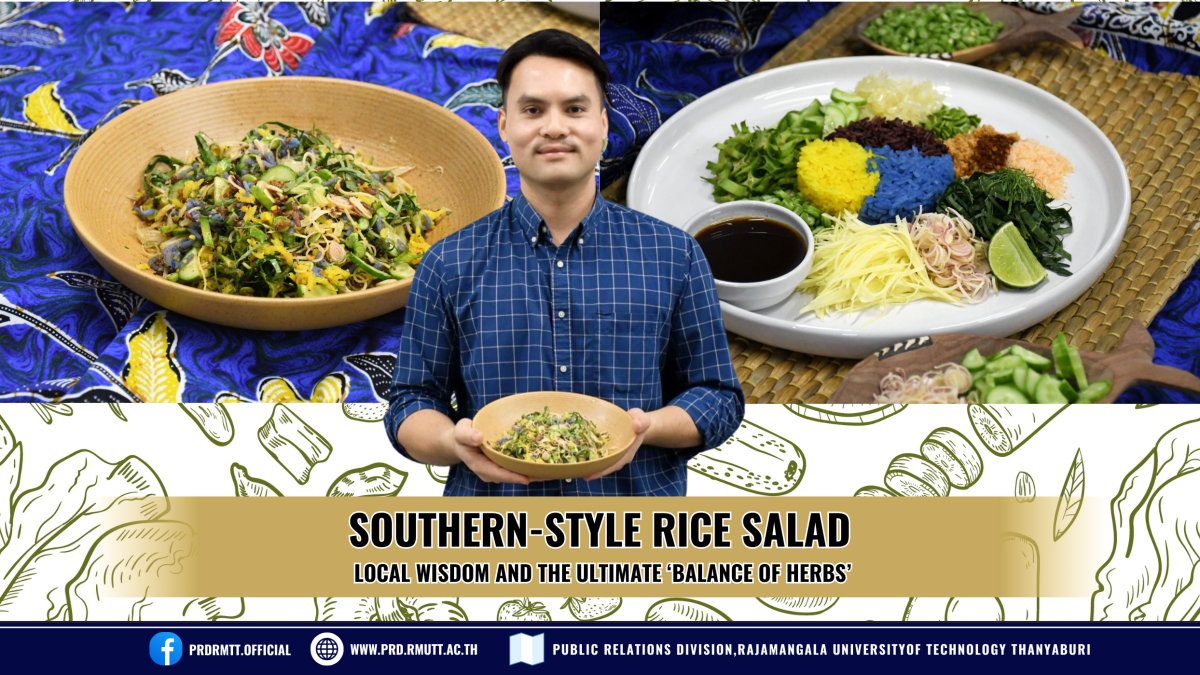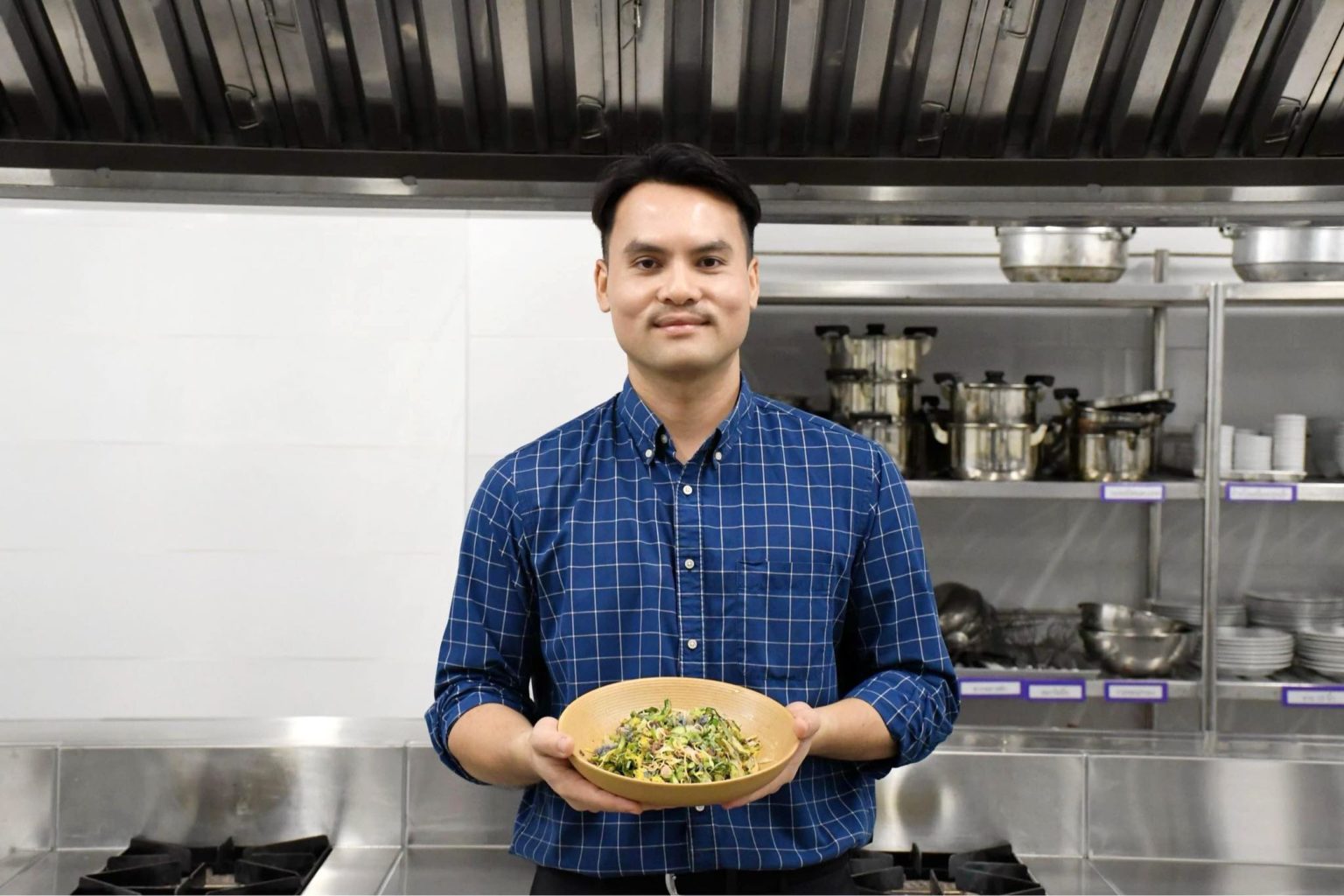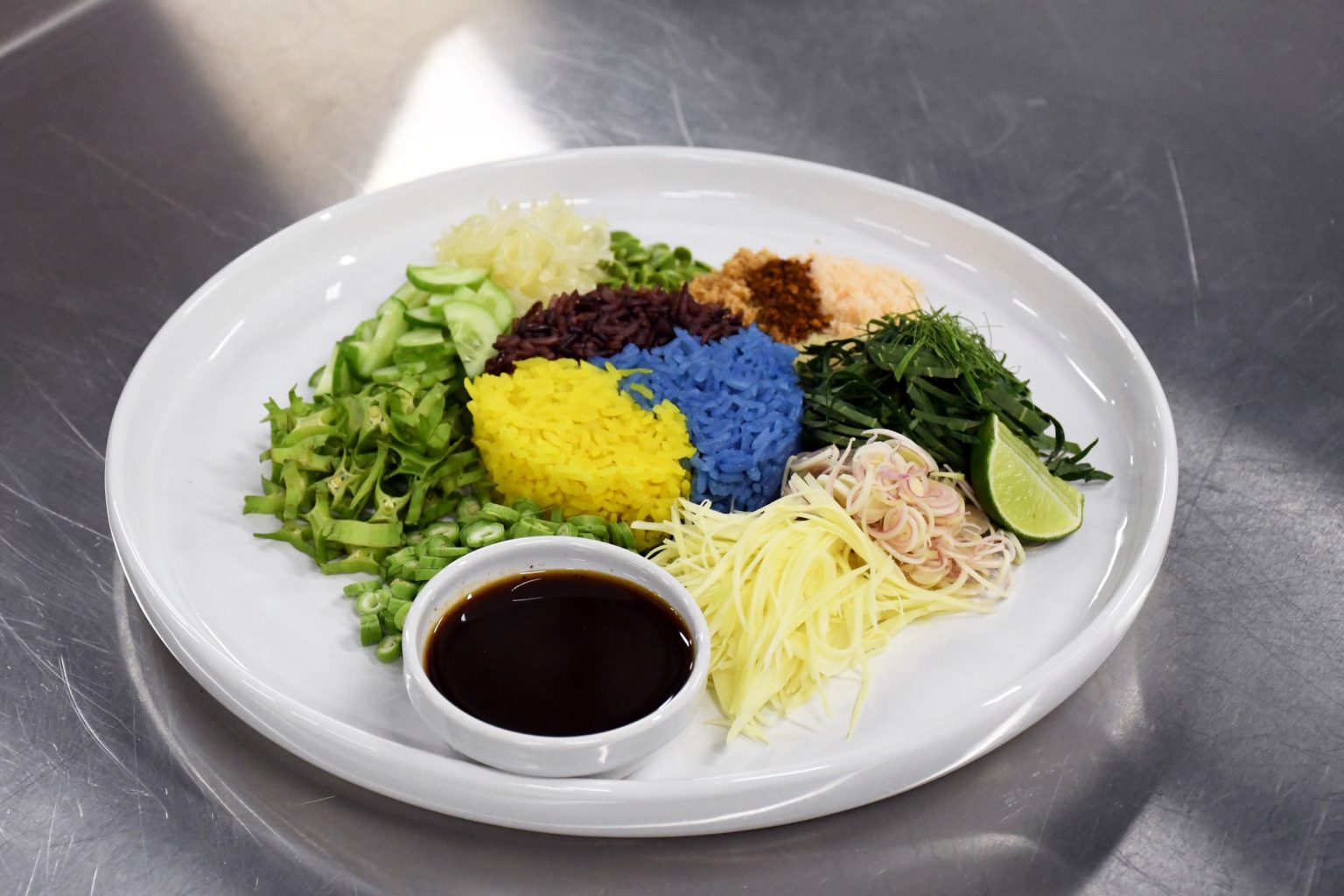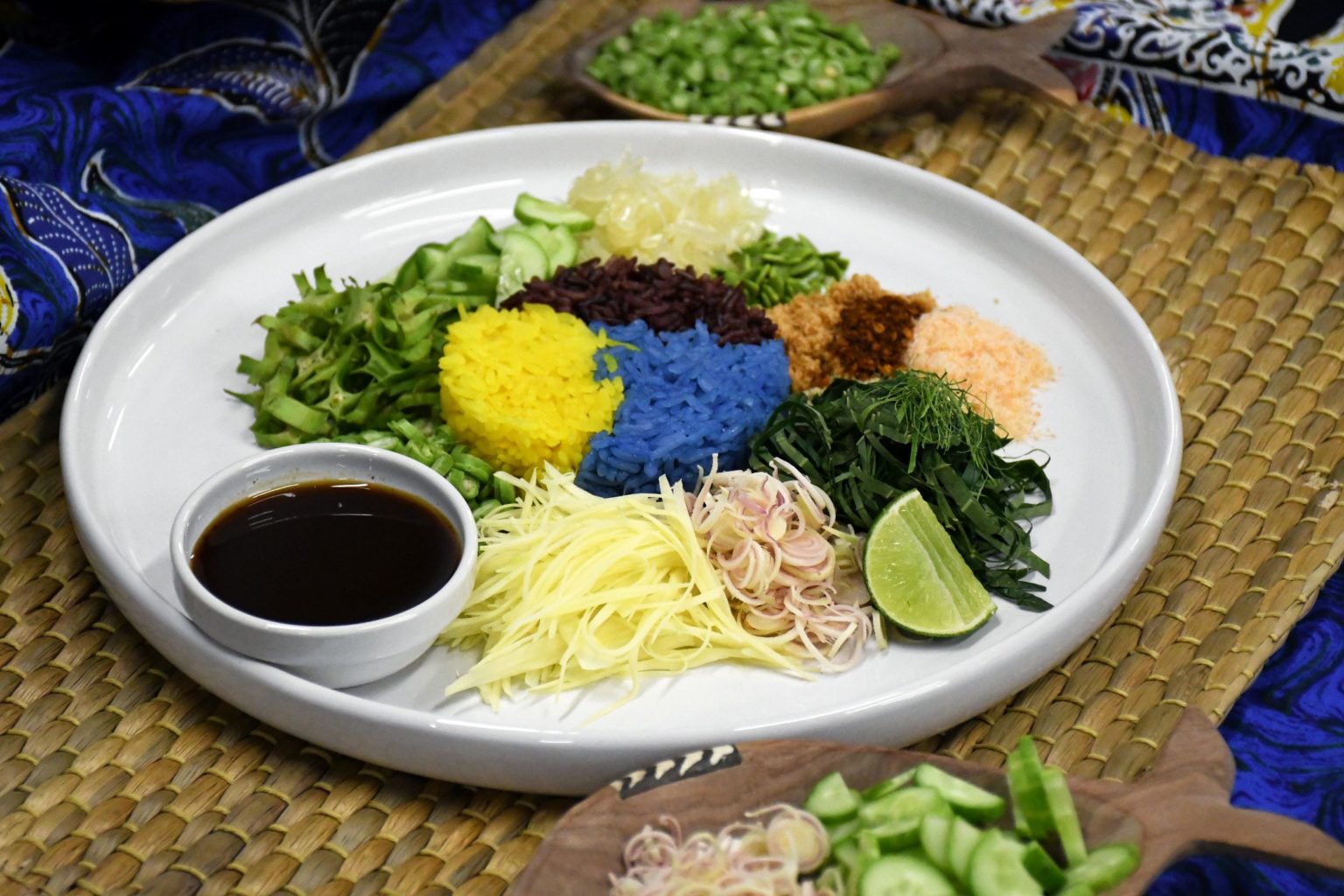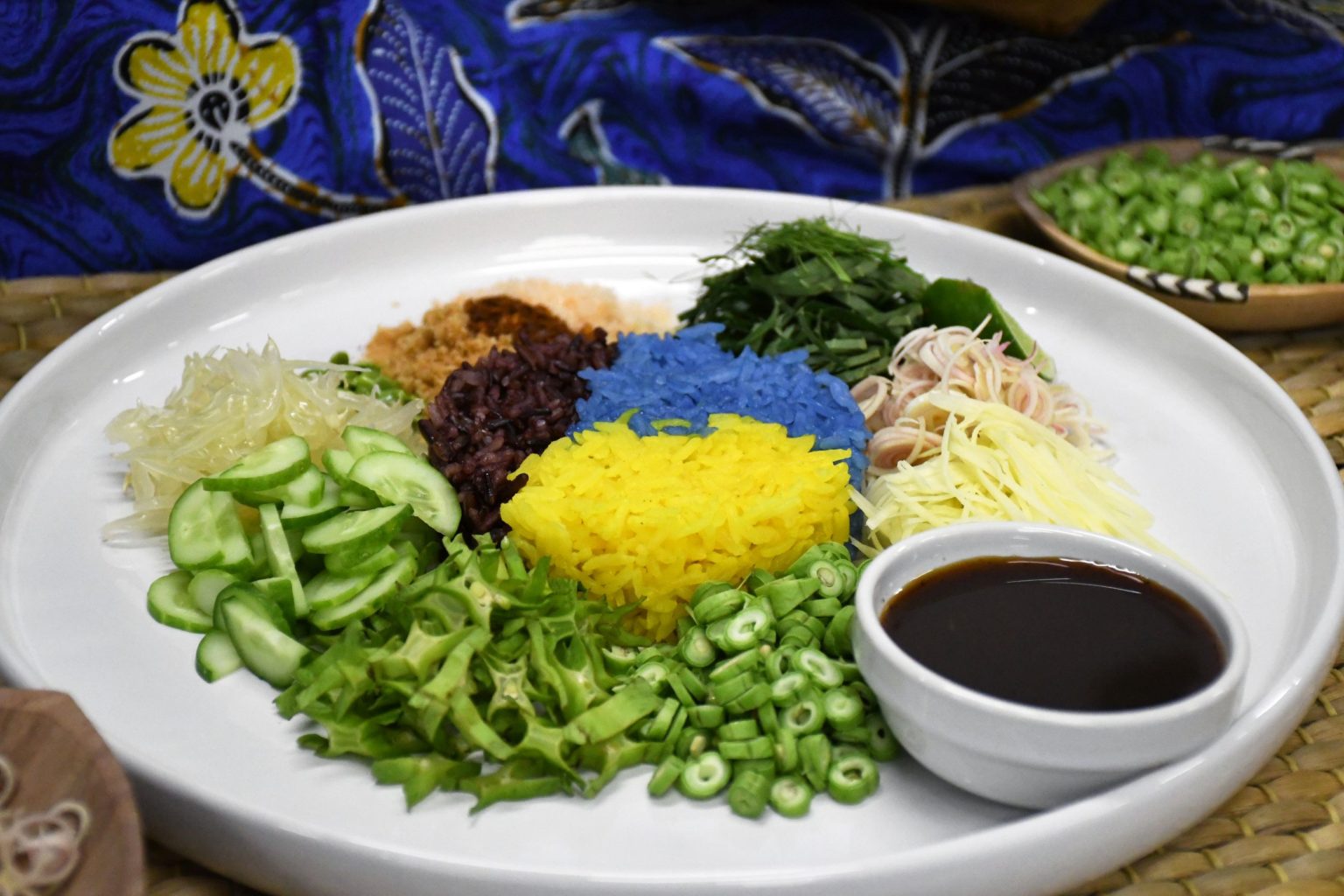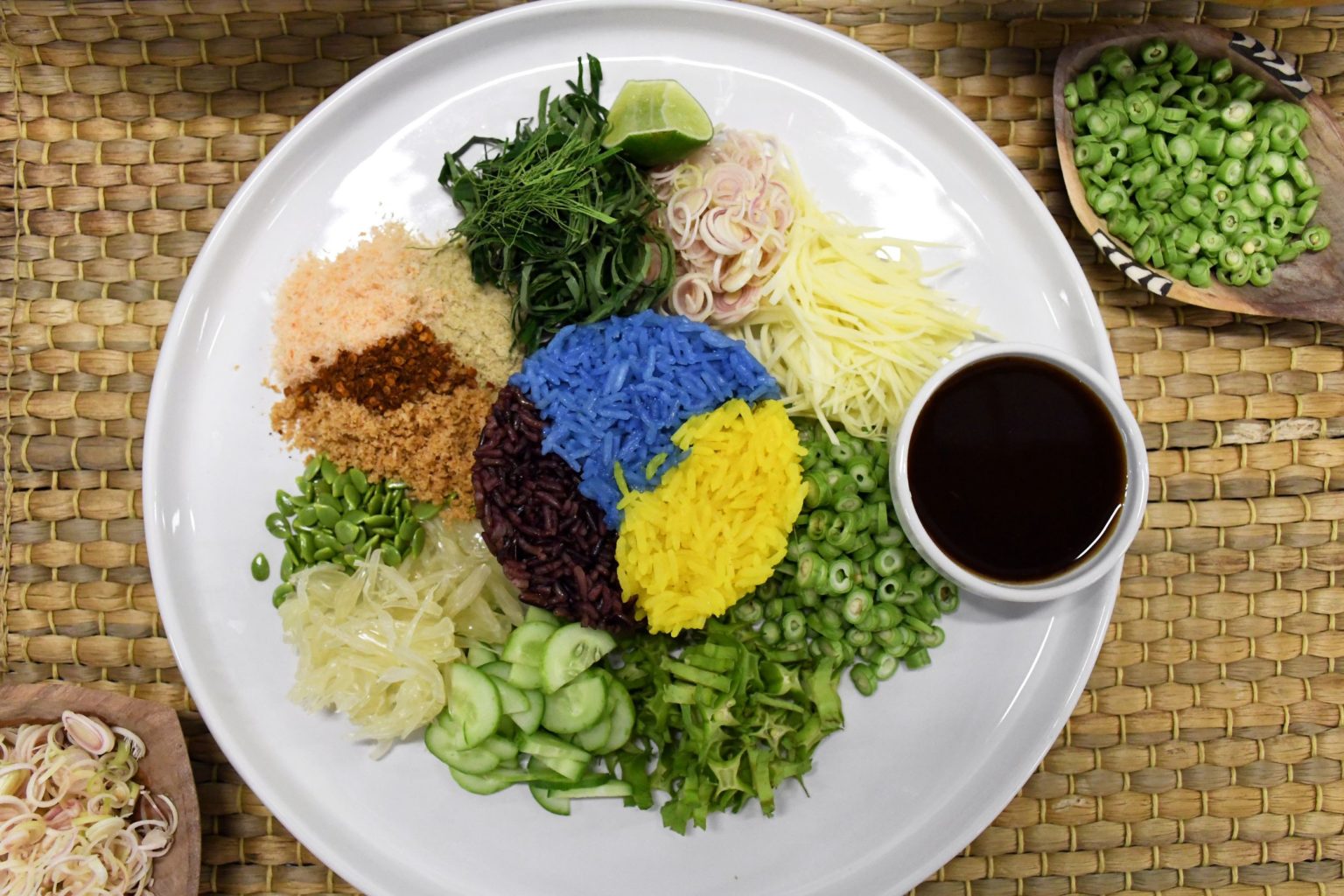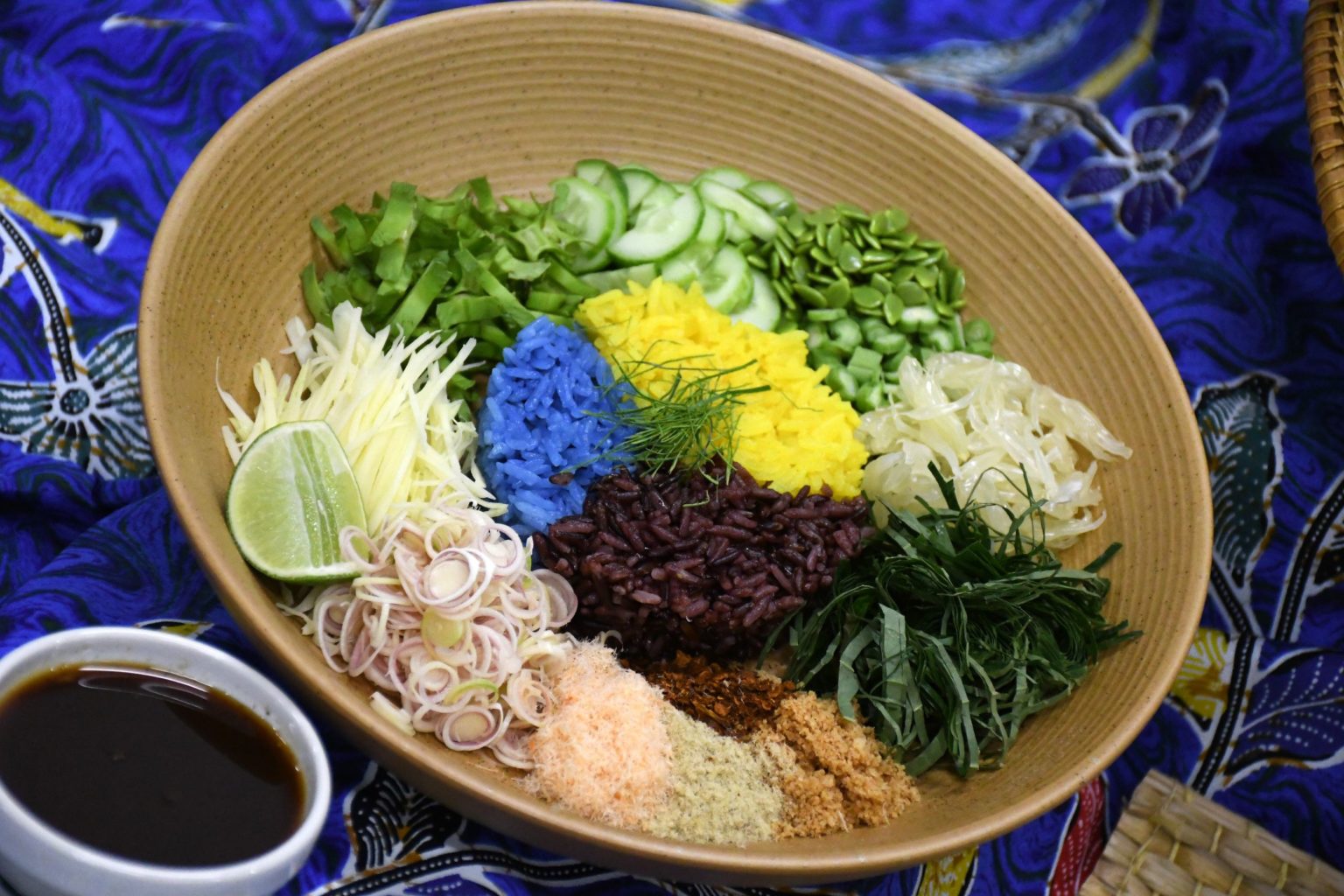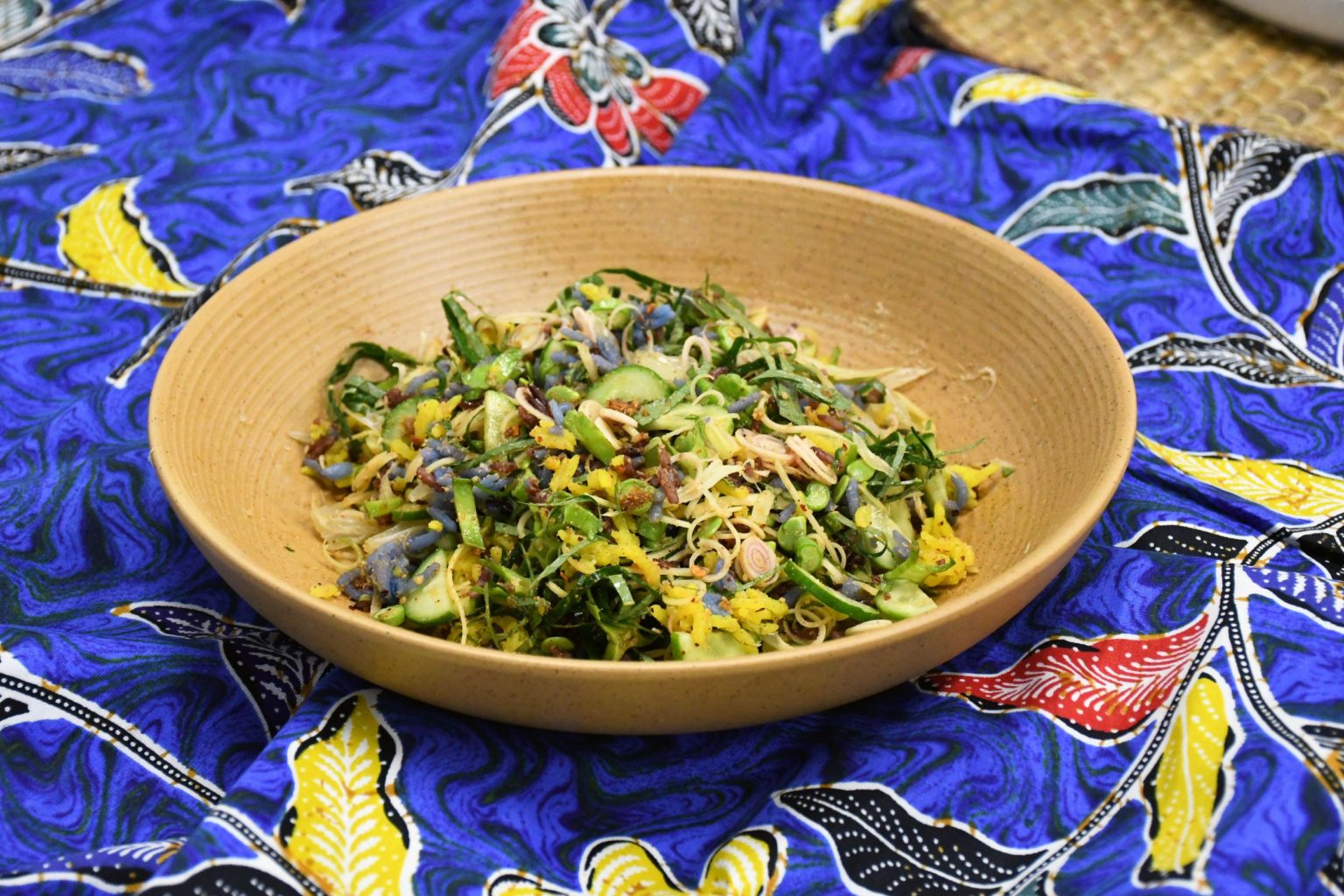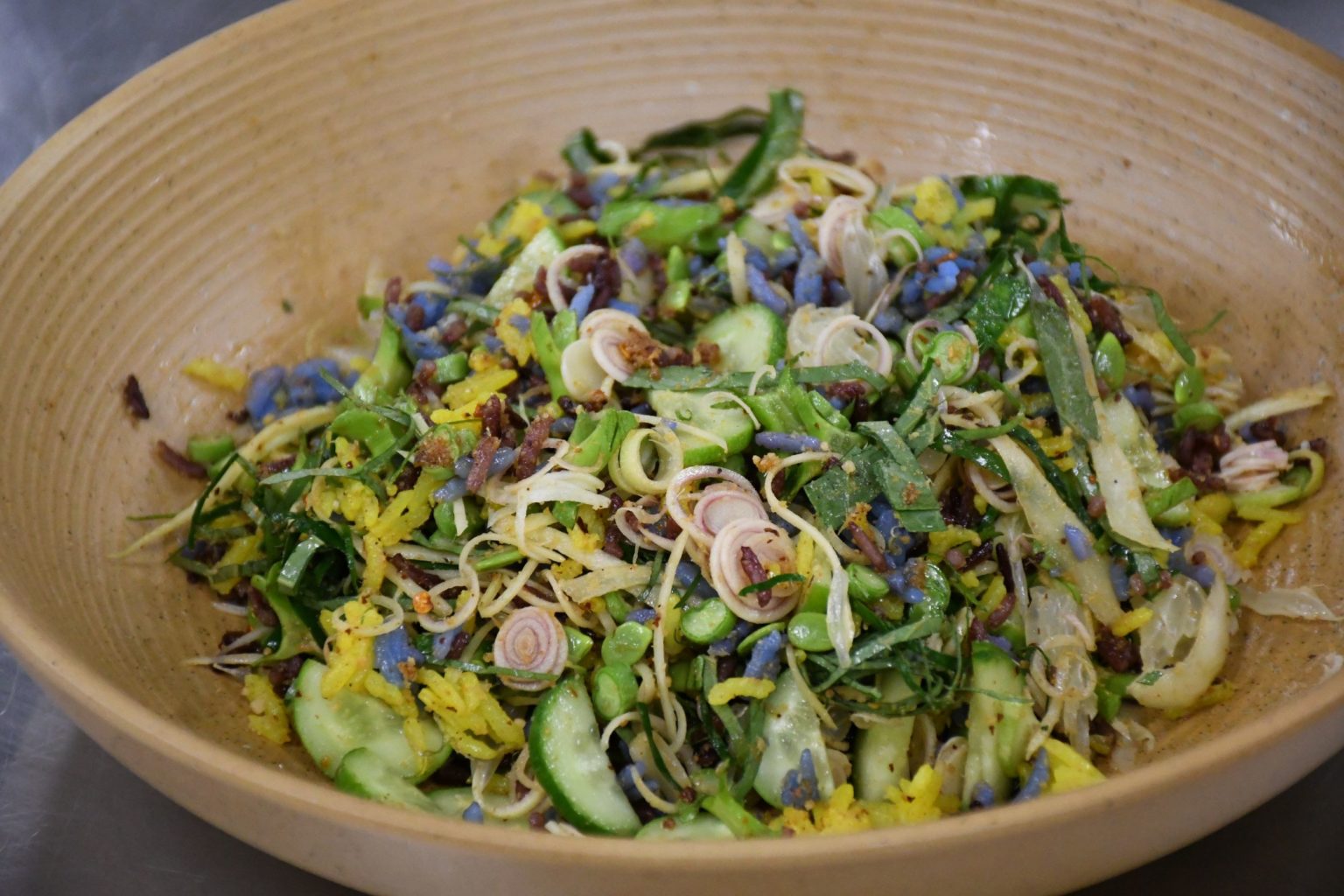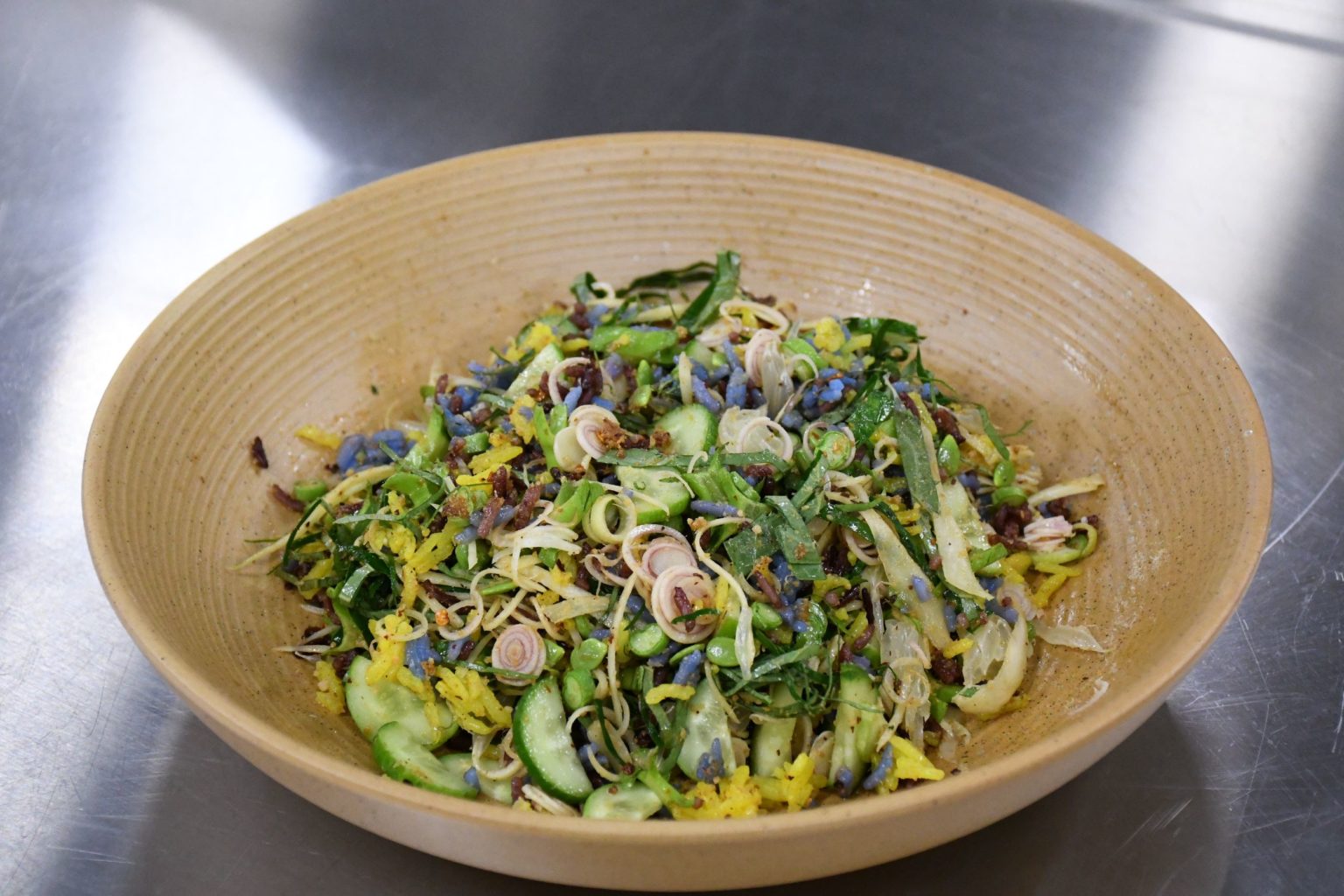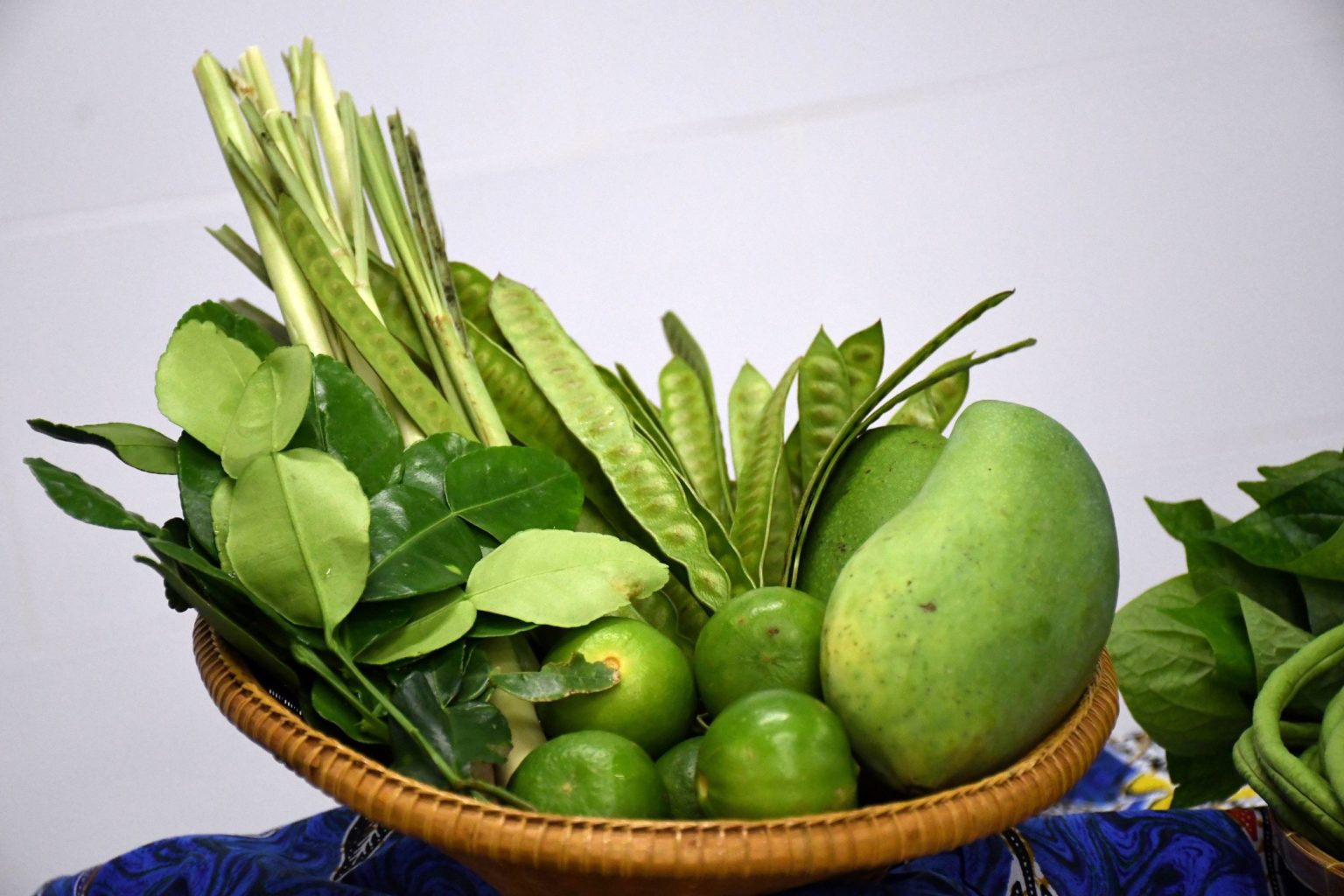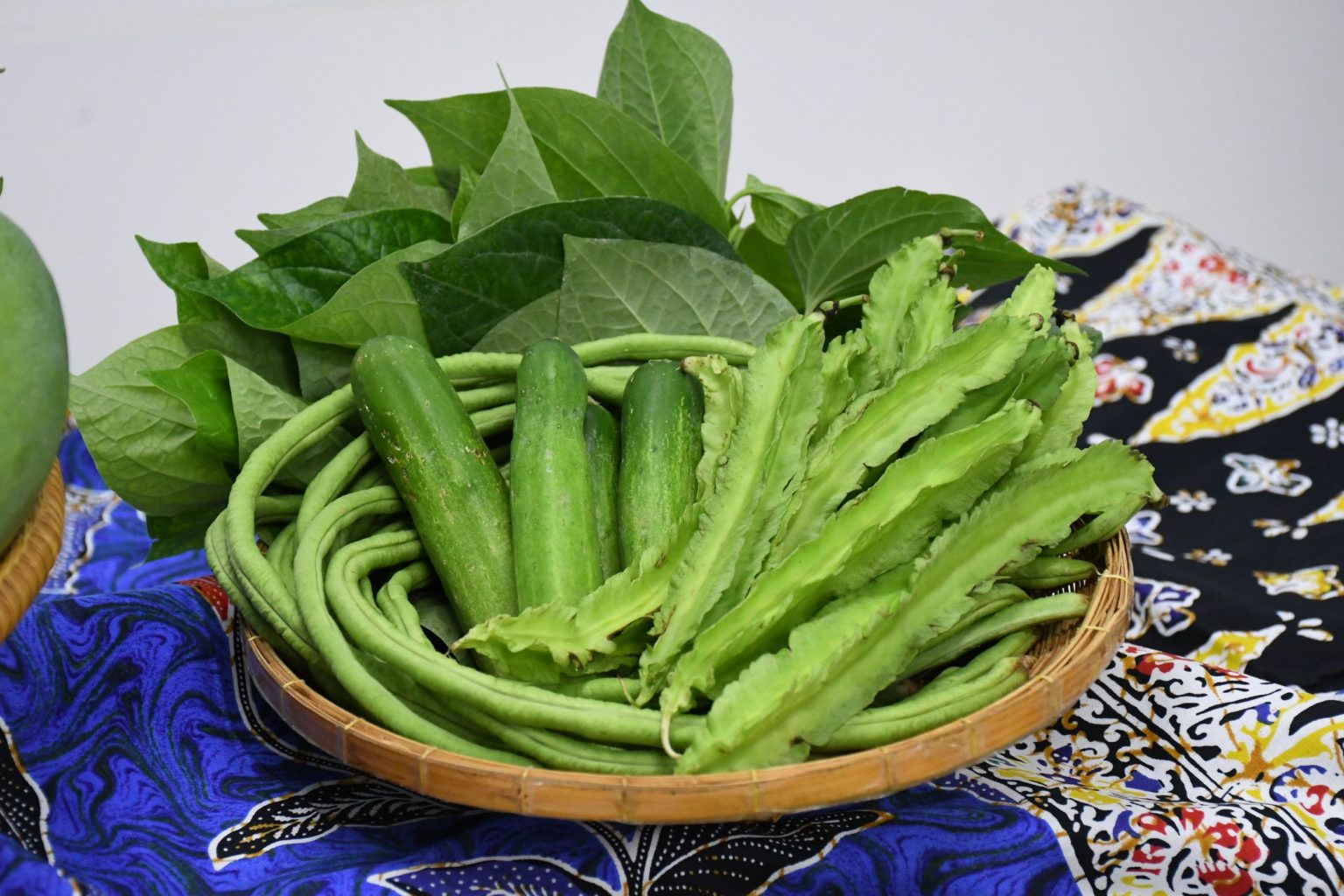
Public Relations for the March 2024 RMUTT Encouragement Clinic Schedule for Psychological Counseling Services
20/02/2024
Rajamangala University of Technology Thanyaburi and Dhonburi Rajabhat University Collaborate to Develop Integrity and Transparency in Operations
24/02/2024Southern-style rice salad, a local dish from Southern Thailand, showcases vibrant colors from various vegetables and ingredients, and its distinctive flavor and aroma come from the fermented fish sauce, budu. Typically, this dish is enjoyed for breakfast or lunch as it is considered a complete one-dish meal, which means it can be fully satisfying without the need for additional side dishes.
Assistant Professor Kritin Chumkaew, a lecturer in the Food and Nutrition Department at the Faculty of Home Economics Technology, Rajamangala University of Technology Thanyaburi (RMUTT), describes Southern-style rice salad as a creation from the local wisdom of the southern people. The dish prominently features budu, made from fermenting small fish with salt, such as Hemiramphus (garfish) or anchovy, which serves as the main ingredient. Alongside, it includes various herbs from home vegetable gardens and dried shrimp, which are preserved through food conservation methods. To enjoy Southern-style rice salad to its fullest, all the ingredients in the dish should be mixed well before eating, allowing each bite to deliver a medley of flavors such as salty, sweet, sour, spicy, bitter, rich, and astringent, similar to the experience of eating miang kum (a traditional Thai snack). This is part of the dish’s unique charm. Additionally, Southern-style rice salad is a top choice for clean eaters and those looking to control their weight.There are three main components of Southern-style rice salad: (1) Rice, the primary energy source of the dish. Usually, rice cooked with herbal-infused water is used to create a variety of colors, such as blue from butterfly pea flowers, yellow from turmeric, and green from crushed piper leaf juice. Alternatively, one might opt for health-focused rice varieties such as brown rice, riceberry, fragrant black rice, or Sangyod rice, depending on preference. The rice should have beautiful grains that are soft and aromatic. (2) Budu Sauce, Budu sauce is made by fermenting small fish with salt for an appropriate period, resulting in ‘raw budu sauce’. This is then boiled and flavored with palm sugar and herbs such as galangal, lemongrass, shallots, and kaffir lime peel to mask the fishy smell, along with other desired seasonings. The ready-to-eat budu sauce for khao yum should taste salty and sweet, have a fragrant smell, be dark brown in color, and have a moderately thick consistency. Importantly, budu sauce is high in calcium and contains sodium, so it’s necessary to control the sodium intake appropriately. (3) Vegetables and other ingredients, most commonly used vegetables have distinct flavors—sour, astringent, bitter, and aromatic. Examples include lemongrass, betel leaves, kaffir lime leaves, white popinac seeds, long beans, winged beans, cucumbers, green peppercorns, sour mango (or mango ginger), and lime, according to preference. A commonly used fruit is pomelo because it provides a balanced sourness. All vegetables should be thinly sliced to facilitate mixing and enhance the dining experience. Additionally, flowers like torch ginger and butterfly pea flowers can also be consumed with khao yum. Other dry ingredients include ground roasted chili, ground dried shrimp, ground crispy fish, toasted coconut, and puffed rice. These dry ingredients help improve the overall flavor, enhance the aroma, and create an appealing texture in the dish. The Secret to Delicious Southern Thai Khao Yum Lies in Budu Sauce. Assistant Professor Krittin shares that the ingredients and basic preparation for budu sauce include:
– 1 cup of palm sugar
– 1 tablespoon of shrimp paste
– ½ cup of raw budu sauce
– ½ cup of water
– 5 crushed lemongrass stalks
– 1 piece of crushed galangal
– 2-3 torn kaffir lime leaves
– peel of half a kaffir lime
After preparing these ingredients, melt the palm sugar over heat until it resembles caramel. Add the raw budu sauce, shrimp paste, and water. Once it boils, add the prepared herbs and simmer until thickened. Strain to remove the solids. Simply mix rice, budu sauce, vegetables, and other components to serve.”In terms of nutritional value, khao yum consists of various herbs that provide vitamins, minerals, dietary fiber, and antioxidants. For example, betel leaves are high in calcium, promoting healthy bones, teeth, and digestion. Lemongrass helps with bloating, expels gas, promotes urination, and reduces blood fat. Mango, pomelo, and lime are rich in vitamin C. Thus, khao yum is a balanced, clean food that’s also great for weight control,” explains a professor from the Faculty of Home Economics Technology at Rajamangala University of Technology Thanyaburi. Today, Southern Thai khao yum may vary in appearance, ingredients, and taste, depending on the region and preference. However, using food to maintain health is better than using medicines. Promoting local cuisine is also essential for consumer demand and should be integrated with tourism and marketing communications.
Assistant Professor Krittin concludes that Southern Thai khao yum, with its rich cultural and culinary heritage, stands as an important culinary art. This art could expand from local economic development to national and regional levels. Sellers, entrepreneurs, and Southern residents might just be waiting for serious support from relevant authorities. Hopefully, Southern Thai khao yum will gain popularity, become trendy, and serve as an excellent alternative food choice.
For detailed news, visit: Daily News Online: https://www.dailynews.co.th/news/3197884/
- Assistant Professor Kritin Chumkaew
- Southern-style Rice Salad
- Southern-style Rice Salad
- Southern-style Rice Salad: Local Wisdom
- Southern-style Rice Salad: Local Wisdom
- Southern-style Rice Salad
- Southern-style Rice Salad(after mixing) 1
- Southern-style Rice Salad(after mixing) 2
- Southern-style Rice Salad(after mixing) 3
- Ingredients included (vegetables)1
- Ingredients included (vegetables)2

